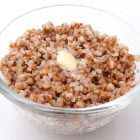The Myth of the Literary Cowboy, Part 5: Cowboy Poetry

“Isn’t that an oxymoron?”
I’ve heard this phrase uttered by a number of people—students, coworkers, friends, academics, random drunk party guests—anytime I mention one of the following: wearing comfortable stilettos, being a vegan Texan, or enjoying cowboy poetry. The juxtaposition of those pairings proves too much for people to process, but cowboy poetry is especially baffling.
Perhaps it is because they see each individual element of the phrase “cowboy poetry” in its most clichéd light: the tortured poet, rumple-haired and sad-eyed, like some disheveled Precious Moments figure; and the Stetson-topped cowboy, squinting in the sun, bow-legged and oblivious to the rules of grammar and hygiene. In comparison, comfy heels and rejecting meat in the land of steak seem downright logical.
Maybe the inability to take cowboy poetry seriously stems from the belief that cowboys are too masculine or “real” to indulge in something as abstract as poetry. The student naysayers I’ve encountered instantly smirk at the idea, suggesting things like Howdy Haiku and Six-Shooter Sonnets. One did a pretty slick impression of John Wayne reciting “The Love Song of J. Alfred Prufrock”: “Well do I eat a peach, Pilgrim?”.
Academics likewise have trouble contextualizing it. Writer Dana Gioia has argued that cowboy poetry is a blip in the “New Bohemian” movement of the past few decades, part of the rejection of the stuffy poetry tradition in the transition from print to digital, where slams and rap have mainstreamed. While this is a reasonable interpretation, it marginalizes cowboy poetry and the cowboy as artist. As with most poetry, it’s highly subjective. Thus I present a Quick and Dirty guide to its unique voice.
It’s Been Around
For Waddie Mitchell, one of the great living cowboy poets, the genre “was always there.” Cowboys may have called it other things, like storytelling or songs, but the intention existed long before it was named. Granted, in the grand scheme of literary history, cowboy poetry is relatively young, at a little over a hundred years old. Following the Civil War, real cowboys on the trail mixed traditional ballads (see below) with war songs to create their own storytelling style as they passed lonely hours. One of my favorite cowboy poems is “The Walking Man” by Henry Herbert Knibbs, written in 1914 (roughly two years after The Virginian).
So while the cowboy flourished in fiction, dime novels, magazines, radio, television, and film, he was as prevalent in poetry. And if that poetry was perhaps less mainstream, several cowboy poets have nonetheless attracted media attention. Mitchell, for example, appeared several times on the Tonight Show with Johnny Carson.
Of course, it might be that Carson’s interest was merely of the oddity variety—what kind of oxymoron is cowboy poetry—but Mitchell was able to perform poetry on a late night talk show. How many poets can list that on their resume? How many writers for that matter? Meanwhile, Wallace McRae, another cowboy poet, was awarded the National Heritage Award in 1990 from the National Endowment for the Arts. Even in this literary form, the cowboy is still part of the cultural conversation.
It’s Friendly with Traditional Poetic Forms

Courtesy of Cowboypoetry.com
Much of cowboy poetry uses the traditional English Ballad closed form with ballad stanzas (quatrains) and rhyme schemes (some use couplets; others may use ABAB or a similar variation). Several include iambic pentameter or other forms of meter, such as tetrameter. For example, the opening stanza of Knibbs’ “Make Me No Grave” uses iambic pentameter with the ABAB scheme.
Make me no grave within that quiet place
Where friends shall sadly view the grassy mound,
Politely solemn for a little space,
As though the spirit slept beneath the ground.
Note also the use of nature imagery. In many ways, cowboy poetry seems to be the descendant of Romanticism, with its focus on the natural world and the common man. The connection is not that farfetched if we remember Romanticism was a reaction to political and economic turmoil, much like the creation of the cowboy character. Also like the Romantics? Closed form is only a jumping off place. Only the imagination sets limits.
But, It Isn’t Just The Same Old Thing
Perhaps more than literature or film, cowboy poetry is more realistic in its presentation of the West. Rather than deifying or deconstructing, it more often seeks to capture the real working West instead of the cliché. Frequently absent is the romanticized image of the cowboy as the knight of the West, or the soul-seeking gunslinger at the end of an era.
Instead, the poems often tackle elements of the practical working life of the cowboy, focusing on the loss of a horse or the comradery of the cattle drive. Though sometimes employing humor, they avoid tired jokes or obvious, Hollywood views. Cowboy poetry is perhaps the most truthful literary home of the cowboy because it is made for a community rather than the masses.
Robert Fletcher’s “The Belled Coyote,” for example, plays with dialect as a form of word manipulation while discussing the annoyance of coyotes.
Aint no one loves a coyote
That I ever heard about.
He aint nuthin’ but a pestilence
Requirin’ stampin’ out.
A sneakin’, thievin’ rustler,—
A gray, ga’nt vagabone
Whose locoed vocal tendencies
Are lackin’ depth and tone.
I particularly love his construction of the word “vagabone” for its playfulness and auditory resonance, and the inclusion of the Spanglish “locoed.” To me it’s witty without being smug, rural without being hokey. Perhaps I’m biased because I too find coyote howling irritating. When people talk about them singing, I assume they are from out of state. Wolves may howl or bay or some other mournful, poetic word; coyotes yip, shriek, and generally cause a ruckus.
Gatherings are a Big Deal
It has been suggested that cowboy poetry is an oral tradition; however, most of the early cowboy poets, such as Knibbs and Badger Clark, were published. The return to the oral tradition took seed with the National Cowboy Poetry Gathering held in Elko, Nevada (generally known as Elko), first held in 1985. Many writers, like those dissenters I often encounter, are perplexed by the event, questioning the purpose, the appeal, and the authenticity. Whereas poetry readings are more often than not small affairs, gatherings are annual events that bring in thousands of fans and performers. Gatherings are participatory, involving everyone from seasoned performers like Baxter Black and Tom Russell to novice poets braving the microphone for the first time.
Over the years Elko has grown and, by some accounts, mainstreamed, although the impact of the increased profile has mixed reviews. Some say it has become too based in entertainment and marketing—and these critiques make it sound, to me at least, like it has replaced the Wild West Shows of the past, where a lifestyle is manifested into an experience for sale and consumption in the form of memorabilia.
But others hold it as the standard for gatherings, the place to experience the vast variety cowboy poetry has to offer. Beyond Elko, annual gatherings include National Cowboy Poetry Rodeo, Monterey Cowboy Poetry and Music Festival, Heber Valley Cowboy Poetry, and the Texas Cowboy Poetry Gathering.
A Little Guitar Never Hurts (But It’s Not Country Music)
Poetry often treads the line between song and literature; cowboy poetry is no different. At gatherings, many cowboy poets perform with guitar in hand, singing or speak-singing their words. Yet unlike popular songwriters who are classified as poets (Bob Dylan comes to mind), these cowboy poets are not lumped into the mainstream world of country music. One of things that fascinates me is that our culture embraces a spectrum of folk and country style music, such as the Blues, Bluegrass, Nashville and Texas country (which are different, ya’ll), yet the cowboy poet disconnects from cowboy songwriters in popular discourse.
Anyone Can Play
At gatherings, the persona aspect of the performers is akin to the country music performers of the past—to be a cowboy poet, one should dress the part. That being said, a poet need not be a cowboy to write cowboy poetry, particularly since performance is only a small part of the community. The poet can adopt the cowboy persona or elect a third-person approach, as long as the topic is in some way related to the cowboy or his way of lifestyle. While it seems logical that cowboy poets would be working cowboys, the ranks of cowboy poets are a numbered with a range of writers. There are also female cowboy poets, such as Susan Parker, Sharon Carpenter, and Barney Nelson (a former professor of mine). Cowboy poetry is democratic as long as you’ve got a story to tell.
Next time we’ll ride into the sunset with my cowboy story, discussing space cowboys and other modern interpretations. Until then, enjoy Waddie Mitchell reciting Henry Herbert Knibbs’ “The Walking Man.”


